Little Crystal Canyon, Little Crystal Creek
This section of Little Crystal Creek is an easy and quick beginner canyoning trip and play area. The waterfall at the bottom of the range is spectacular and offers a beautiful large and deep swimming hole.
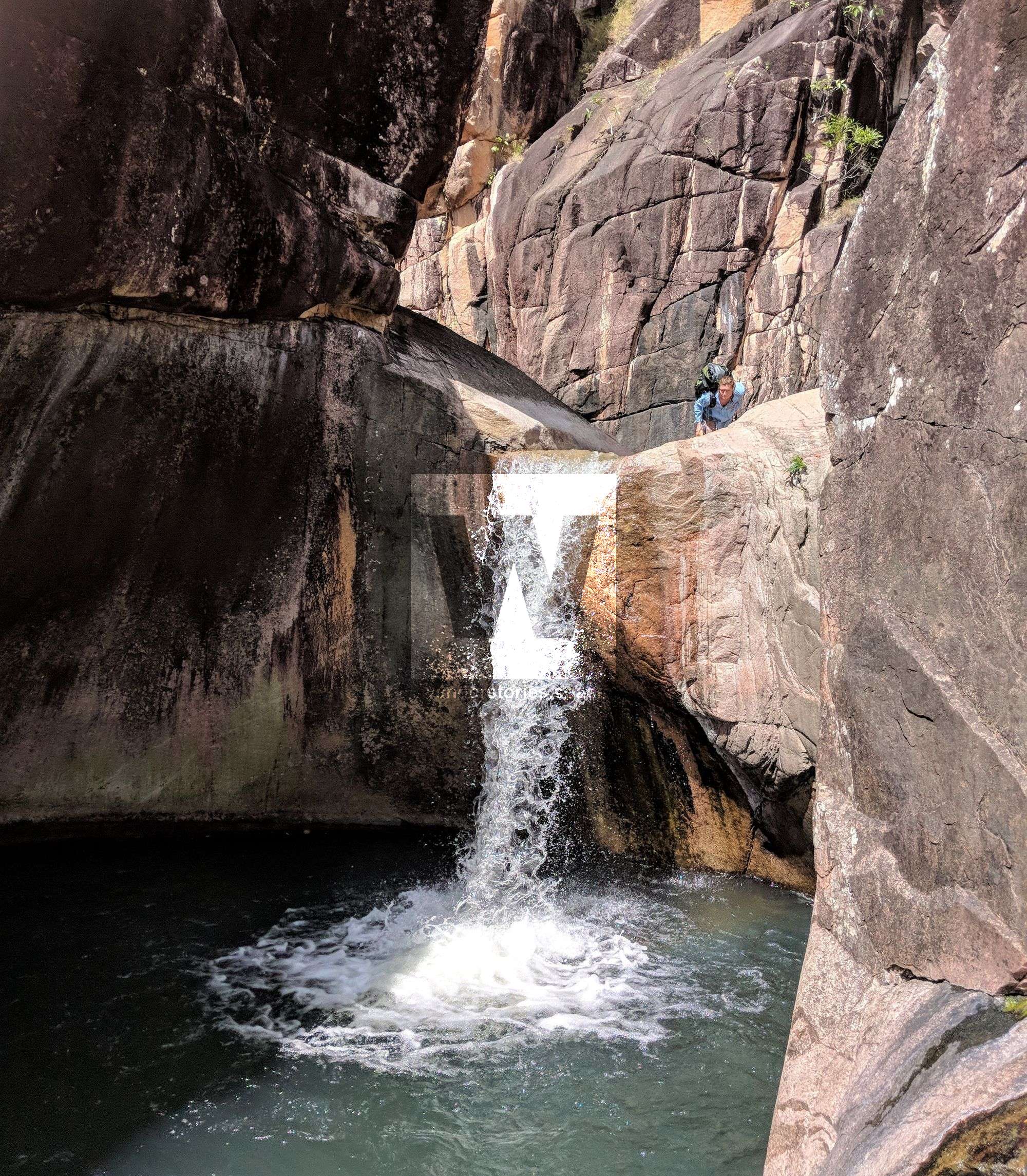
Location - Paluma Range National Park, North Queensland, Australia
Grade - V1 A1 I
Approach - 15-30 minutes (500 metres) down Maidenhair Fern Creek
Descent - 30 minutes - 1 hour (200 metres)
Exit - 30 minutes - 1 hour (500 metres) up the ridgeline
Total time - Allow 3 hours on first trip
Full course - 1.2 km round trip
Total elevation loss - 165 metres (including approach)
Flash flooding level - Medium
First descentists - Unknown
These lower waterfalls are located at the base of the Paluma Range and is the last waterfall of Little Crystal Creek. The waterfall at the bottom of the range is spectacular and not only does it offer a beautiful large and deep swimming hole but has the opportunities to play around - abseiling, cliff jumping, swimming, deep water soloing. The smaller waterfall above the large one has its own small swimming hole which you can slide off the waterfall into and has a good little climb up a crack next to the falls.
Approach
You can access this waterfall via Maidenhair Fern Creek or via descending the adjacent ridgeline. There are a few places to park your car but the one at the top of the ridgeline is limited to one small car.
Interactive Map
Here's an interactive map of the trip:
Rappels
R1-15m NA-TR J-5m
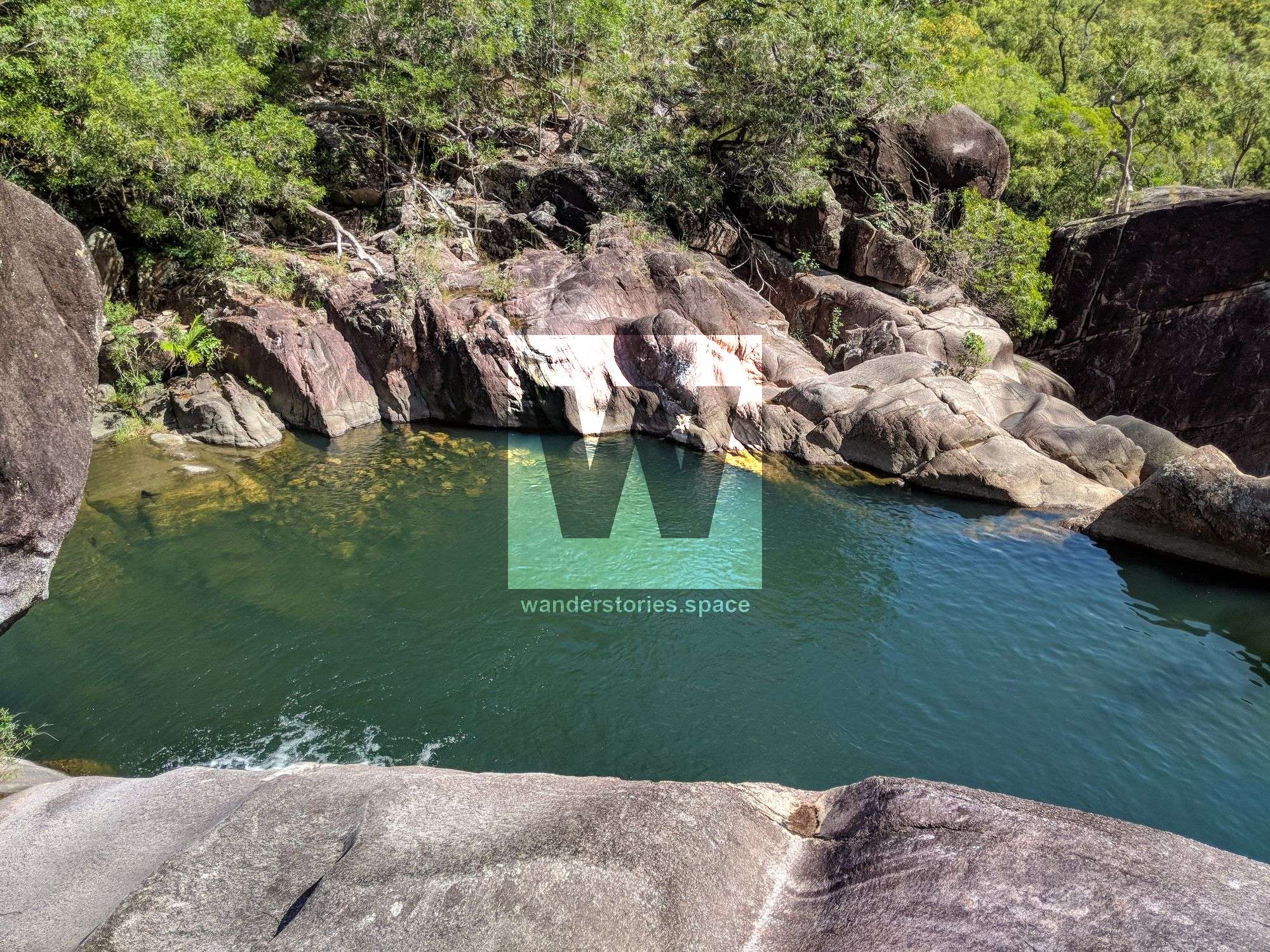
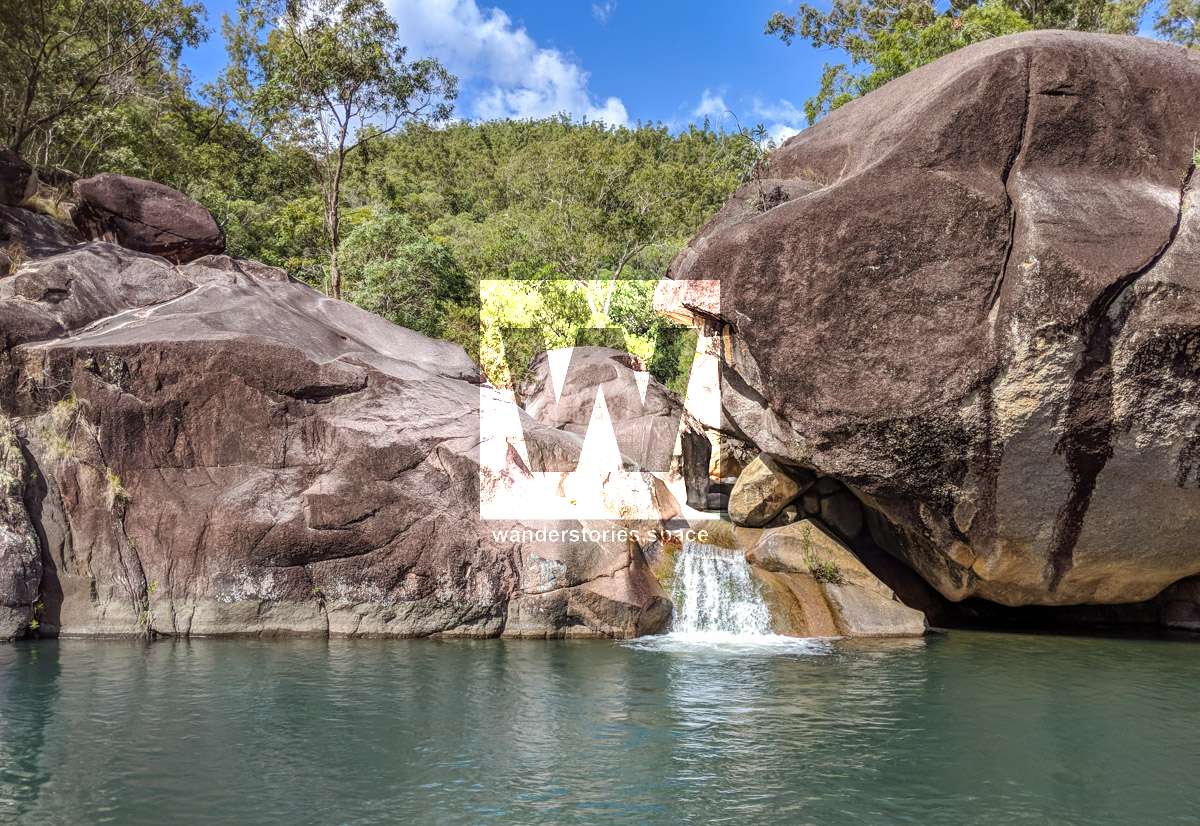
Jump, scramble, slide, or rappel (chockstock, tree, etc) into the large pool.
R2-8m XX-C NA-TL
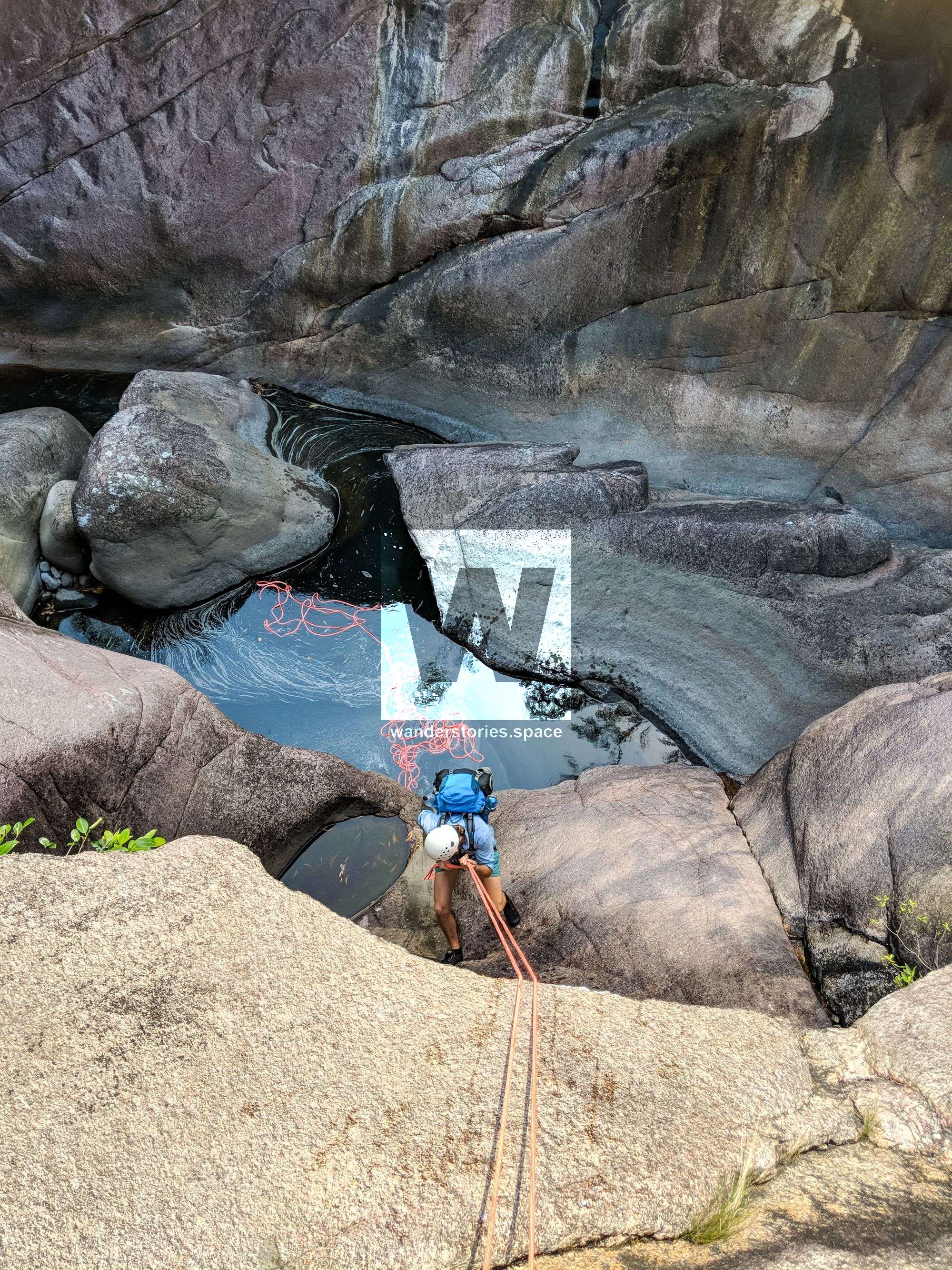
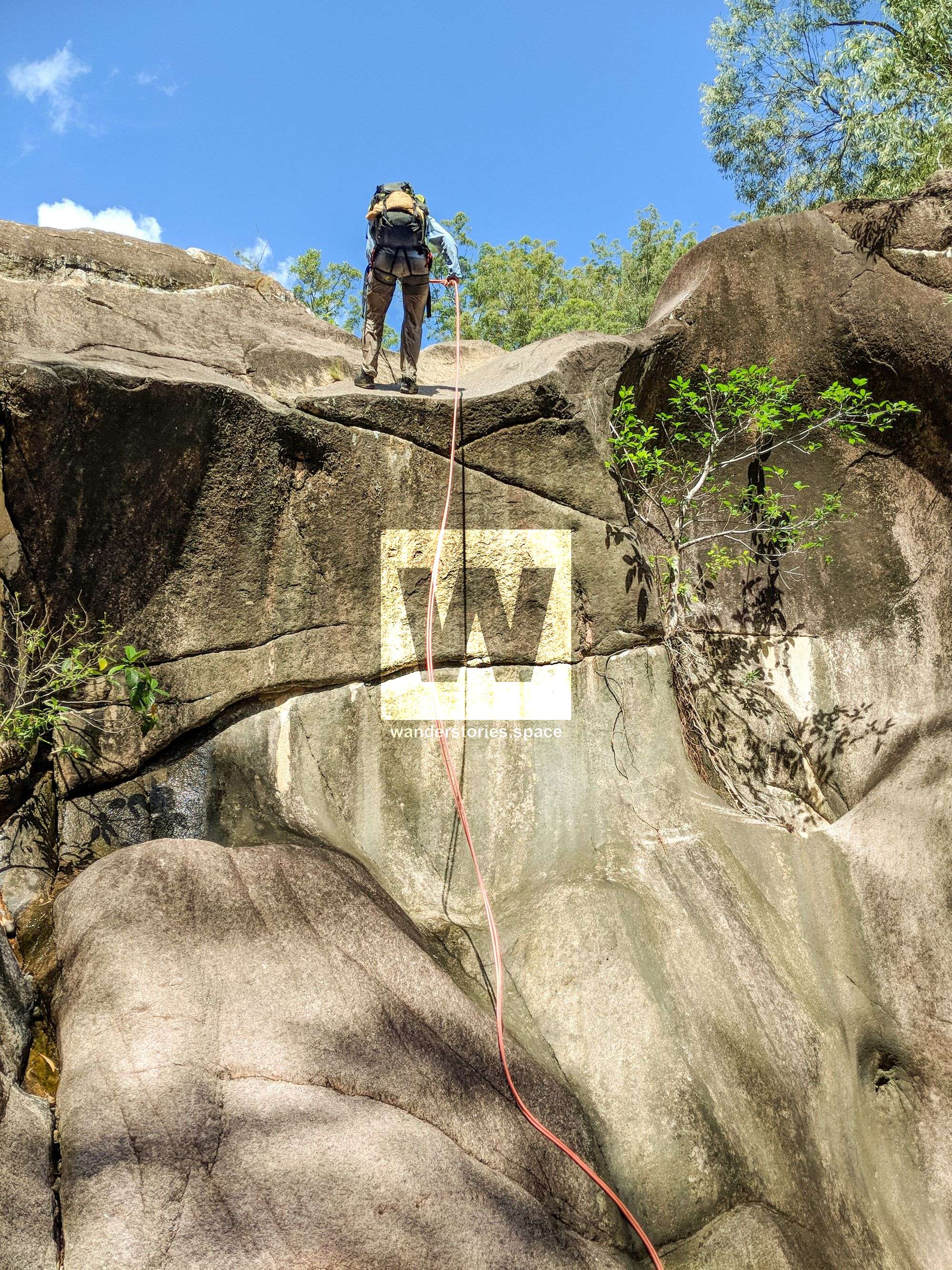
Rappel into the mini-slot canyon via the bolts or chockstone.
J3-4m Optional
Slide/jump into the small pool below. Can also scramble out left to avoid. Or use a natural anchor or meat anchor to test the waters first.
Danger Notes: Check pool for hazards before jumping.
J4-10m Optional
Jump into the large pool below. Can also scramble out left to avoid. Or use a natural anchor or meat anchor to test the waters first.
Danger notes: Check pool for hazards before jumping.
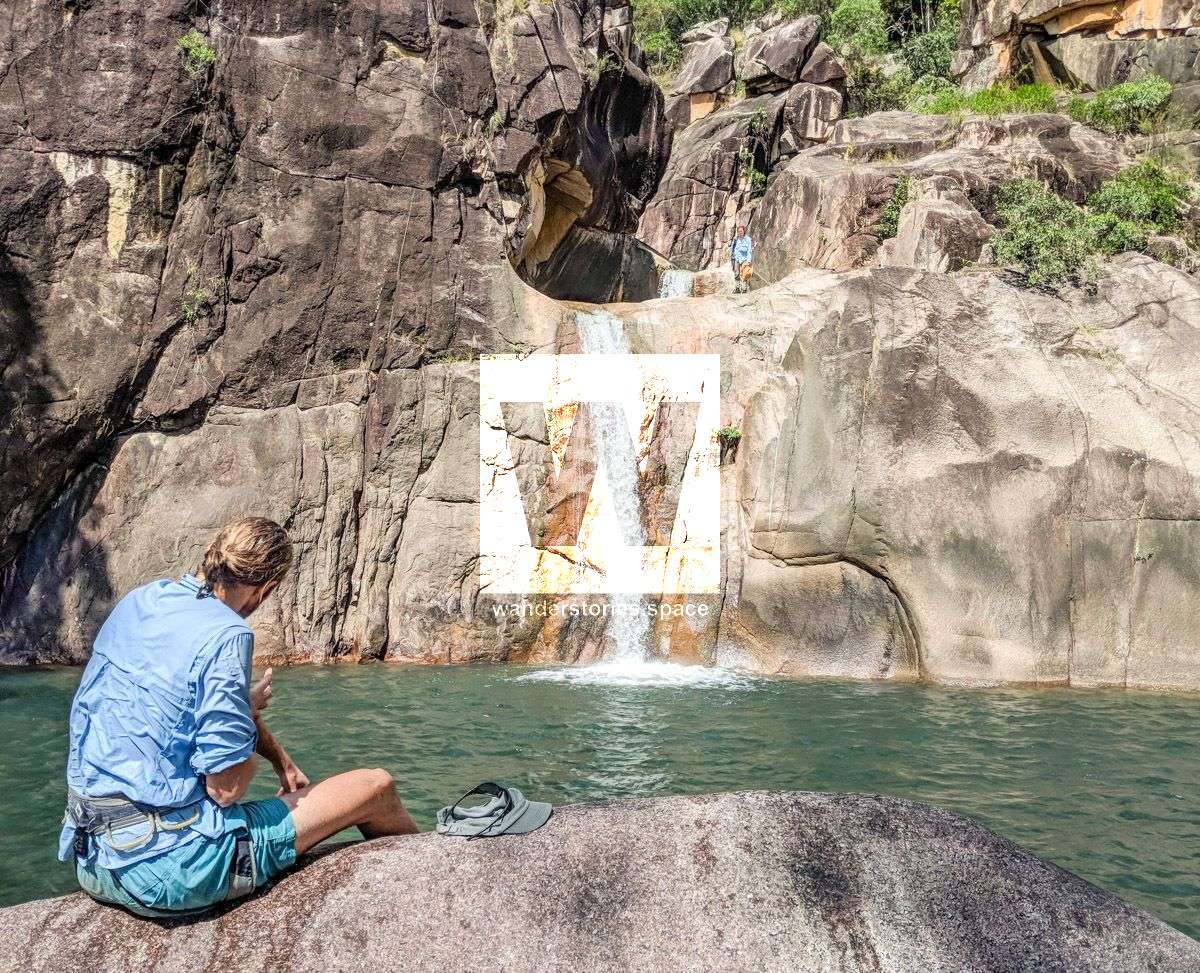
Exit
Once below the last waterfall, you can start your exit via the ridgeline.
WHAT YOU WILL NEED
- Experience in abseiling (there are some technical challenges)
- Enough rope for a 60m rappel
- Rappel devices, prusiks, and webbing
- Grippy shoes on smooth, wet granite rocks
- Helmet
- Backpack
- Food and snacks for the day
- About one litre of water to hike to the top and a way to sterilise your water from the creek
Anchoring notes
There are a set bolt anchors in the canyon however it is not unusual to come across damaged or even missing anchors, especially after flooding events. Please use sound judgement when considering previously installed anchors, this includes tape slings, ropes, and other textiles.
Surfaces
Along the route there are various sections of wet, slimy, and dry rock, as with all canyon environments. Please be mindful of your traction and regularly test your grip throughout the route as you cannot rely on the colour or texture of the rock to determine its safety against slippage. Take caution when near cliff edges.
Experience
No responsibility or liability is taken for any harm, death or loss of property resulting from the use of this article. You must carry anchor building materials, be experienced and use your own judgement when canyoning. Flooding events can strip anchors and change the canyons layout and conditions. Improper and insufficient experience will result in serious injuries or in many cases death. Always respect all signs you encounter and take everything in you brought with you.
Please read the Beginners' tips for canyoning in North Queensland article.
See our general disclaimer that includes canyoning.
Canyoning Topo
This canyoning topo is for illustration-purposes only.

Legend
X / XX - Single and twin bolt anchor.
NA - Natural anchor such as a tree or rock.
TL / TR / C - True left, true right and centre when looking downstream.
R1-8m / R2-6m - First rappel and its height in metres, second rappel and height.
Optional - These rappels can be avoided by exiting prior or walking around.
Please note that an activity permit may be required in national parks.
If this information is outdated or you would like to make a correction, please contact us.
This article, and all other articles, are for entertainment purposes only and are not to be used as a guide. Please see our Disclaimer for more information.
